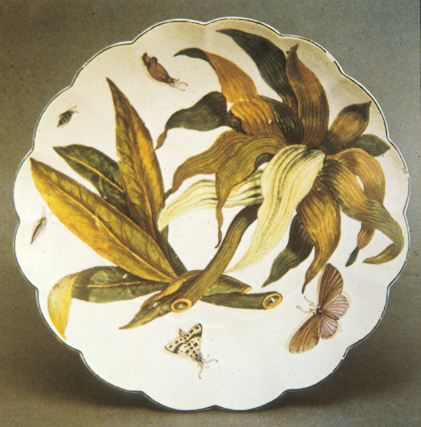
Botanical Lobed Plate, Soft Paste Porcelain, Chelsea, English 1755 CE
ART 198 - HISTORY OF WORLD CERAMICS
| Chelsea was founded in 1745 as a production facility for making soft paste porcelain by Nicholas Sprimont, a former silversmith, and Thomas Briand, a chemist. A great proportion of the work produced at Chelsea was inspired by Chinese and Japanese prototypes, but work with more European influences was also created. During the 'Age of Enlightenment,' European explorers were traipsing all over the world, 'discovering' new and old civilizations, peoples, plants, and animals, and writing treatises that documented their findings. Botanical illustrations as motifs became fashionable, and the illustrations used by botanists in their descriptions of new genera and species were often copied. While there are some hints of the Kakiemon style here, such as the asymmetrical design and the lobed and darkened border, the subject matter and coloration are more European. This particular design was copied from a print by the German botanical illustrator, George Ehret. Chelsea was favored by the British royal house, and numerous commissions were ordered as gifts, and for Buckingham Palace as well. | Botanical Lobed Plate, Soft Paste Porcelain, Chelsea, English 1755 CE |
|
|